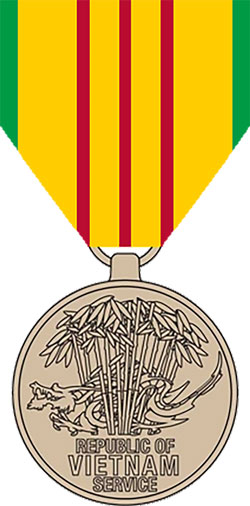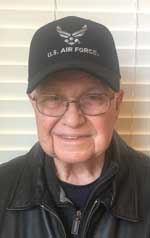Truth versus Propaganda
 A few days before Christmas, the Atlanta Vietnam Veterans Business Association (AVVBA) released its new 47-minute video on The Truths and Myths of the Vietnam War. A few days later the AVVBA sent me an excellent collection of statistics on those who served in the war, including their present adjustment to American society.
A few days before Christmas, the Atlanta Vietnam Veterans Business Association (AVVBA) released its new 47-minute video on The Truths and Myths of the Vietnam War. A few days later the AVVBA sent me an excellent collection of statistics on those who served in the war, including their present adjustment to American society.
As I wrote in my book, Lessons from the Vietnam War: Truths the Media Never Told You, and emphasized in an interview that became part of the video, the Vietnam War was a two-front war. There was military action going on in Vietnam, Laos, Cambodia, and offshore, and there was a propaganda war going on in the United States to influence public opinion against resisting what was essentially a Soviet financed and sponsored North Vietnamese subversion and invasion of South Vietnam. The U.S. and other SEATO (Southeast Asia Treaty Organization) members were bound by the 1955 Paris Peace Treaty ending the French-Indochina War to defend South Vietnam, Laos, and if required, Cambodia, from further Communist aggression.
As mentioned in the AVVBA video and several of my recent articles, the two primary Soviet intelligence agencies of the time, the KGB and the GRU, spent more funds on propaganda and political agitation in the United States than they spent on supplying weapons and logistical support to the Viet Cong and North Vietnamese military invaders of South Vietnam. This was primarily accomplished by the GRU, the Main Directorate of Foreign Intelligence, the rough equivalent of the CIA and British MI6. This funding amounted to more than a billion U.S. dollars, which would be equivalent to over $5.4 billion at the end of 2023. According to the highest ranking GRU officer ever to defect to the United States, Col. Stanislav Lunev (1992), the GRU with some help from the KGB, “helped to fund about every antiwar movement in America and abroad during the Vietnam War.” The KGB was more equivalent to the FBI and responsible for internal security in the Soviet Union and Soviet Bloc countries. The GRU was much larger, and included the much feared, according to the BBC, Spetsnaz (Special Forces) troops. According to Col. Lunev, GRU officers later bragged that the GRU had essentially won the Vietnam War with their propaganda and agitation campaign in the United States.
Part of the propaganda campaign came in slanderous misinformation about the U.S. servicemen fighting in the war. The usual character assassination word-tools were used to create a generally unfavorable sociopathic impression: war criminals, drunken marauders, drug-addicts, and baby-killers, prone to savage inhumanity and criminality. This was designed to undermine military morale, public support for the military, and sometimes to stir up racial tensions. Much of this was adopted without question by much of the media and antiwar campus activists. I had to endure much of this as a graduate student from 1969 to 1971, but I sill hear it. Most of the public knows little about the Vietnam War—or any other war—and what they do know about Vietnam often has its basis in GRU inspired antiwar propaganda.
More than 8,744,000 American military personnel served on active duty from August 5, 1964, through March 28, 1973. Of these, 2,710,000 served within South Vietnam, and another 514,000 served offshore with Naval forces or flying or supporting combat and support missions from Thailand and other areas of Southeast Asia, bringing the total to over 3.224,000. In addition, another 50,000 are estimated to have served from 1958 to1964. I knew personally many of those who served in those early1958-1964 years and were exposed to hostile file and even participated in combat missions assisting the South Vietnamese. So the total served may be close to 3,250,000. This represents approximately 11.6 percent of their generation. The proportion would be higher, of course, for men. Of these, somewhere between 1.0 to 1.6 million saw actual combat or were frequently exposed to enemy fire in combat support. This included 7,847 women, of which 6,250, almost 84 percent were nurses.
The highest number of U.S. casualties occurred within the borders of South Vietnam, but many Air Force and Navy aircraft squadrons flying from Thailand, Okinawa, and Navy aircraft carriers experienced high KIA, MIA, and POW casualties.
The peak troop strength in Vietnam was 543,482 on April 30, 1968.
There were 47,378 combat deaths in in the Vietnam War and another 10,800 non-combat deaths bringing the total to 58,202. This total includes those formerly classified as missing in action (MIA). The average age of the men killed was 23.1 but 61 percent of them were 21 or younger. The average age of the 6,598 officers killed was 28.4., and the average age of 1,276 warrant officers killed, many of whom were helicopter pilots, was 24.7. Eight nurses died. Five men killed were only 16; one was 62. West Virginia had the highest death rate of men killed versus the number who served.
There were nearly 304,000 wounded in the Vietnam War, of which 153,000 required hospital care. Over 75,000 were severely disabled, of which over 23,000 were permanently disabled. Nearly 5,300 lost limbs, and 1,081 sustained the loss of multiple limbs. In February 1967, I spent a night in a hospital room with 8 beds. At least two Marines had lost both legs, the one nearest me had lost both legs and an arm. It was not a pleasant memory, but those two Marines, in all their sleepless anguish and sorrow, still exhibited a spirit of courageous duty and pride in what it meant to be a Marine.
There were 2,443 reported as missing in action during the war. As of January 2014, 1,875 were still unaccounted for. My personal opinion is that few if any are now living. I know from close family experience, however, the terrible emotional burden that comes from having a close loved-one listed as MIA.
There were 744 American prisoners of war (POWs) held mostly in North Vietnam during the war. Of these 114 died in captivity.
Of the 2.71 million who actually served in-country in Vietnam, 88.4 percent were Caucasian (White or Hispanic), 10.6 percent were Black, and 1.0 percent were other races. Combat related deaths were 86.8 percent for “Caucasians,” 12.3 percent for Blacks, and 1.2 percent other races. Overall, blacks suffered 12.5% of the deaths in Vietnam at a time when the percentage of blacks of military age was 13.5% of the total population.
According to one estimate, about 170,000 Hispanics served “in Vietnam”. That would probably be 4.9 percent of 3.45 million, assuming the proper base is Southeast Asia and offshore. Total Hispanic deaths were 3,070, which is 5.3 percent of the total deaths. That would correct combat deaths for White Caucasians to 81.5 percent, Blacks 12.3 percent, Hispanics 5.3 percent and other races 1.2 percent. Thirty-four percent of enlisted Blacks volunteered for combat arms of the military. Seventy percent of the enlisted men killed were of Northwest European descent.
Only 25 percent serving in the armed forces during the Vietnam War era were drafted. This compared to 66 percent in World War 2. However, Vietnam draftees accounted for 17,725 combat deaths, 30.4 percent of the total, in Vietnam.
Protestants accounted for 64.4 percent of the dead, Catholics for 28.9 percent, and 6.7 those claiming other religions or no religion.
Ninety-seven percent of Vietnam veterans were honorably discharged. Eighty-five percent of Vietnam veterans made a successful transition to civilian life. According to a Veterans Administration study, there is no significant difference in drug use by Vietnam veterans compared to their age-equivalent non-veteran peers. Only one-half of one percent of Vietnam veterans have been jailed for crimes, much less than their peer-age group.
Vietnam veterans have a lower unemployment rate than the same non-veteran age groups. Their personal income exceeds that of non-veterans by more than 18 percent.
Seventy-six percent of those who served in Vietnam were from lower middle/working class backgrounds. Three-quarters of them had family incomes above the poverty level, and half of them had family middle income backgrounds. Twenty-three percent had fathers with professional, managerial, or technical occupations. Seventy-nine percent had high school or better education when they entered service. This compared with 63 percent in the Korean War and 45 percent in WW2.
Eighty-two percent of Vietnam combat veterans believe the war was lost because of lack of political will. Nearly 75 percent of the public agrees. Ninety-one percent of Vietnam veterans and 90 percent of actual combat veterans are proud to have served their country. Seventy-four percent say they would do it again, even knowing the outcome. Eighty-seven percent of the public now hold Vietnam Veterans in high esteem.
Even the youngest Vietnam veterans are now over 60, so some estimate that only about a third of them are left. Agent Orange, which turned out to be a dangerous chemical herbicide, keeps contributing to the casualty list long after the last military personnel left in 1973. I lost my brother, Randolph B. Scruggs, who served as an Army specialist NCO in Vietnam during the war, to a rare Agent Orange associated cancer in 2018, more than 47 years after he left Vietnam and the Army to enter graduate school.
Thanks to M. James Littig, Principal of Congressional Strategies in Alexandria, Virginia, and the AVVBA for gathering and sharing these statistics.
“Men acquainted with the battlefield will not be found among the numbers that glibly talk of another war.”—Dwight D. Eisenhower









 Mike Scruggs is the author of two books: The Un-Civil War: Shattering the Historical Myths; and Lessons from the Vietnam War: Truths the Media Never Told You, and over 600 articles on military history, national security, intelligent design, genealogical genetics, immigration, current political affairs, Islam, and the Middle East.
Mike Scruggs is the author of two books: The Un-Civil War: Shattering the Historical Myths; and Lessons from the Vietnam War: Truths the Media Never Told You, and over 600 articles on military history, national security, intelligent design, genealogical genetics, immigration, current political affairs, Islam, and the Middle East. 


